The Marshmallow polypore (Irpiciporus pachyodon/Irpiciporus mollis) is a unique mushroom species with a fun name. Instead of pores underneath the cap like most polypores, this species has teeth (also known as spines). There are not many toothed polypore fungi and even fewer that look like a smooshed marshmallow growing on a tree. The marshmallow polypore is broadly distributed around the globe, but in North America, it is an eastern species.
- Scientific Name: Irpiciporus pachyodon; Irpiciporus mollis
- Common Names: Marshmallow Polypore, Spongy Toothed Polypore
- Habitat: On hardwoods, often oaks
- Edibility: Not toxic; inedible.
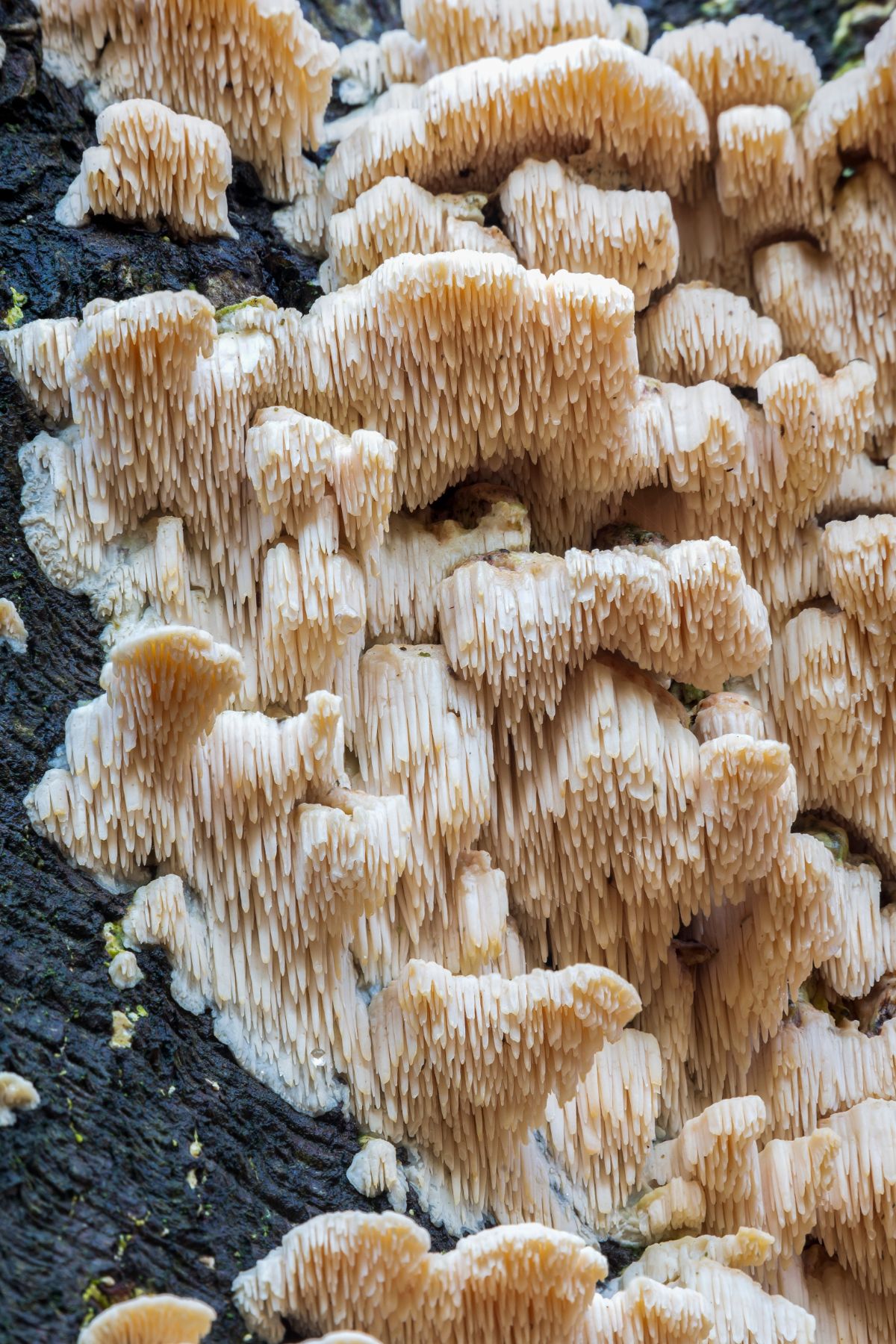
Jump to:
All About The Marshmallow Polypore
The species is commonly referred to as the marshmallow polypore, a name that comes from its spongy, remarkably marshmallow-like texture. Another popular name is the spongy-toothed polypore, a reference to the tooth-like appearance on its underside. It looks more like a toothed fungus, related to Hedgehogs or Lion’s Mane, than a polypore species.
Initially, this mushroom was classified as Hydnum pachyodon and then later as Spongipellis pachyodon. The current accepted name, Irpiciporus pachyodon, was established in 1965. The species name, “pachyodon,” roughly translates to thick-toothed, a reference to the teeth under the cap. However, recent studies show this is likely a European-only species, and the name for North American species is actually Irpiciporus mollis. Ahhhh nomenclature headaches; I mean fun!
This species is still commonly listed as Spongipellis pachyodon in older guides, so don’t be surprised to find it under that scientific name.
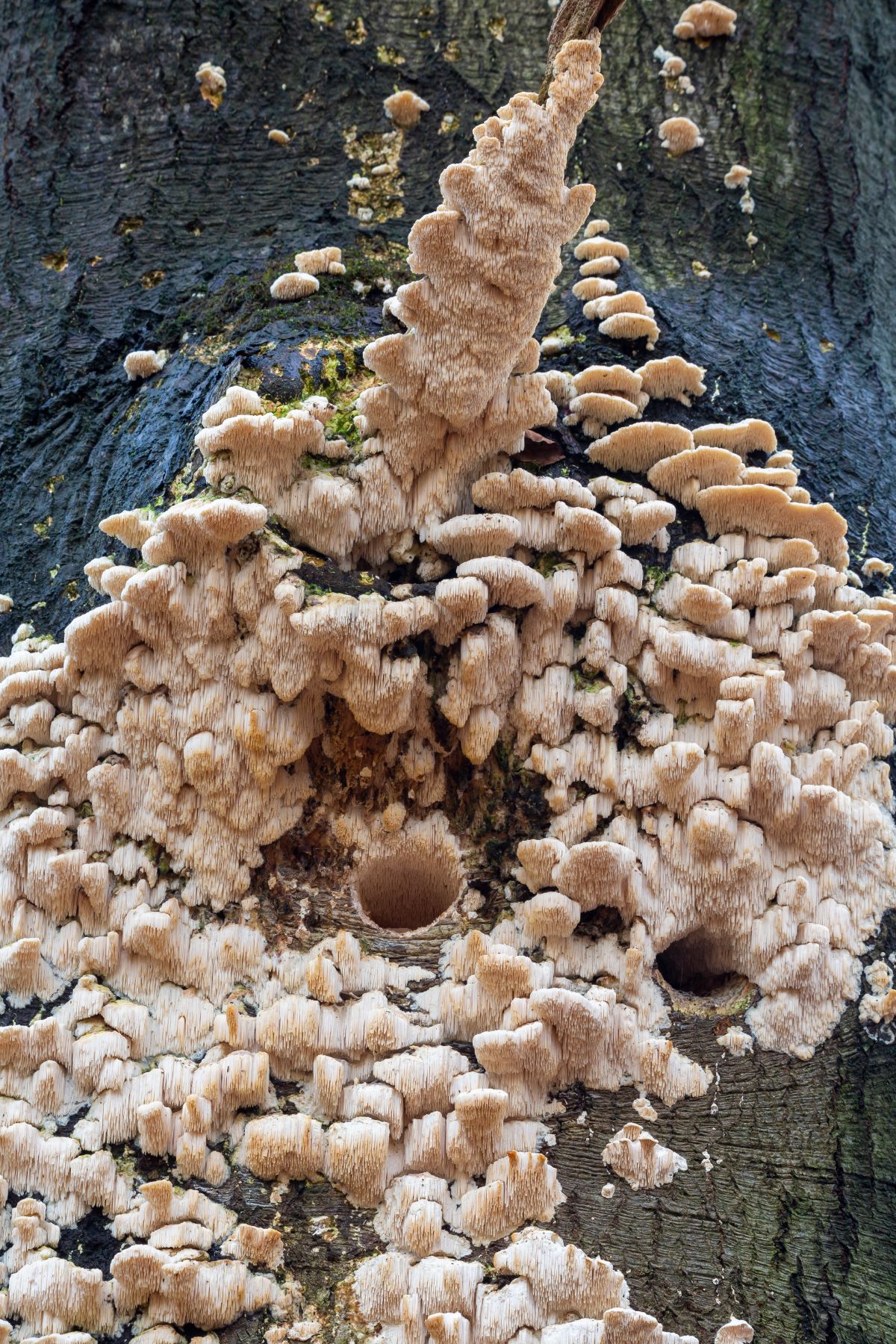
Marshmallow Polypore Identification Guide
Season
This species is commonly encountered during the summer and fall seasons. However, its fruiting bodies can persist and be found throughout the year. You may find it in the depths of winter still doing well.
Habitat
The marshmallow polypore is a parasitic species that thrives on hardwoods, particularly oak trees. It causes a white heart rot to living trees. It is also saprobic, feeding off decaying organic material. This mushroom can be found growing in small or vast clusters across the tree. The clusters are often so fused together that it looks like one large single specimen has formed a sheet across the wood.
This polypore is widely distributed across eastern North America.
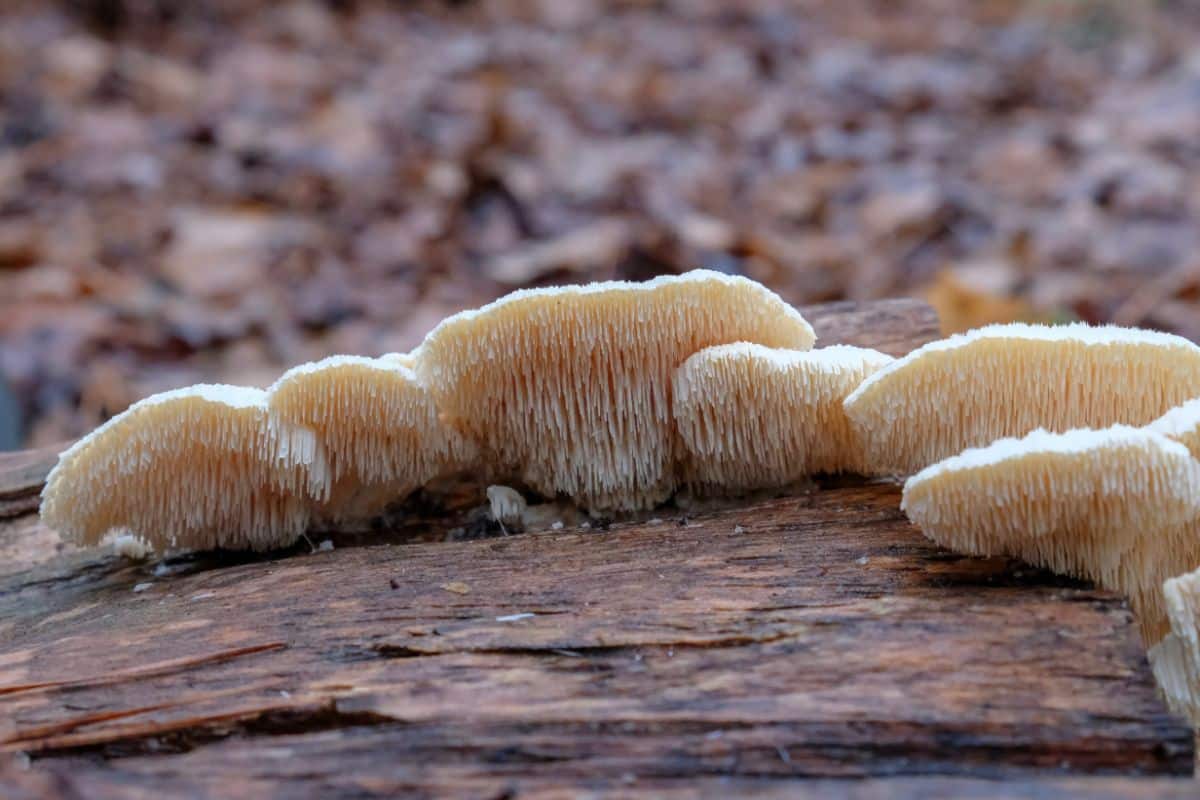
Identification
Cap
The fruiting body of the marshmallow polypore is variable in appearance. It can range from a spreading pore surface with barely any discernible caps to having a folded-over edge resembling a cap to having very clear and defined caps. The caps, when present, average 1-2 inches wide. Initially, the cap is velvety, but then it gradually becomes smooth and bald. The color ranges from white to dull yellowish.
Pores/Teeth
The marshmallow polypore has lots of teeth underneath the cap, which are typically 0.2 to 0.6 inches long. The teeth are flat and irregular in length. The flatness is unusual, as most other toothed species have round spines hanging down. The teeth on this species are actually a result of the pores breaking down to form the teeth-like spines. The teeth are creamy white to yellowish.
Stem
This species does not have a stem. The fruiting body grows as a shelf-like cluster directly from the wood. Often, the caps are fused together to create a vast spreading fruiting body.
Flesh
The flesh of the marshmallow polypore is white with a soft texture above that becomes tougher towards the bottom.
Odor
This species does not have a distinctive odor.
Spore Print
The spore print of this polypore is typically white, although this can vary depending on the maturity of the specimen and the conditions under which the print is taken.
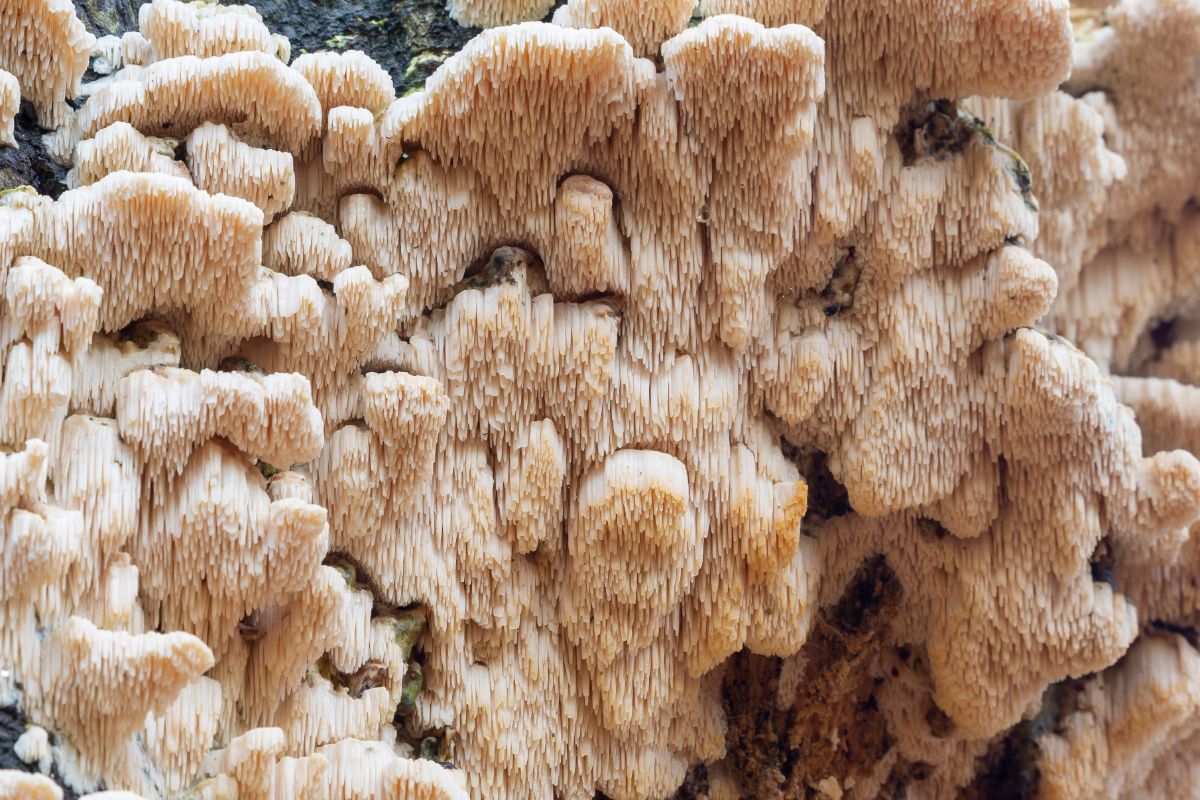
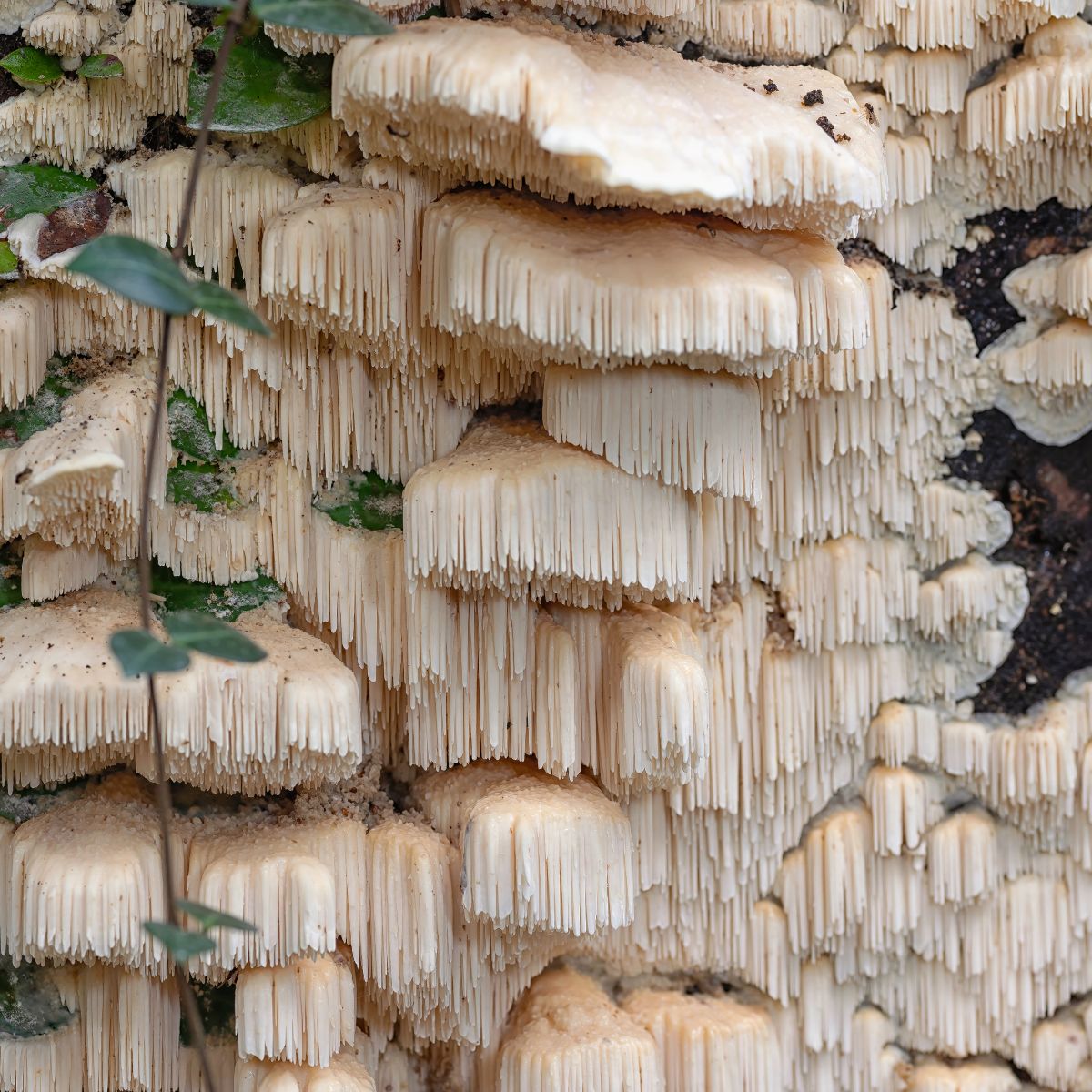
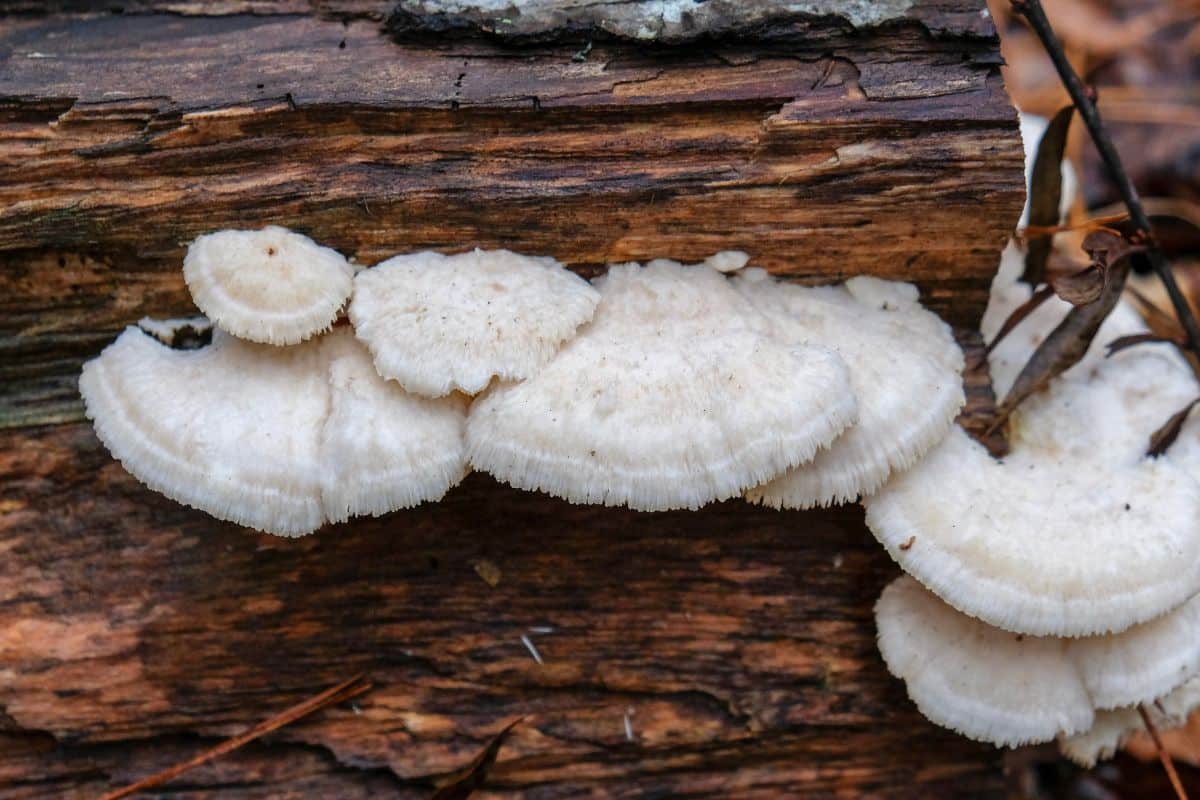
Marshmallow Polypore Lookalikes
Northern Tooth (Climacodon septentrionalis)
The northern tooth fungus looks extremely similar to the marshmallow polypore, except it is much larger. They can get as large as 12 inches across. Northern tooths develop real caps, as well.
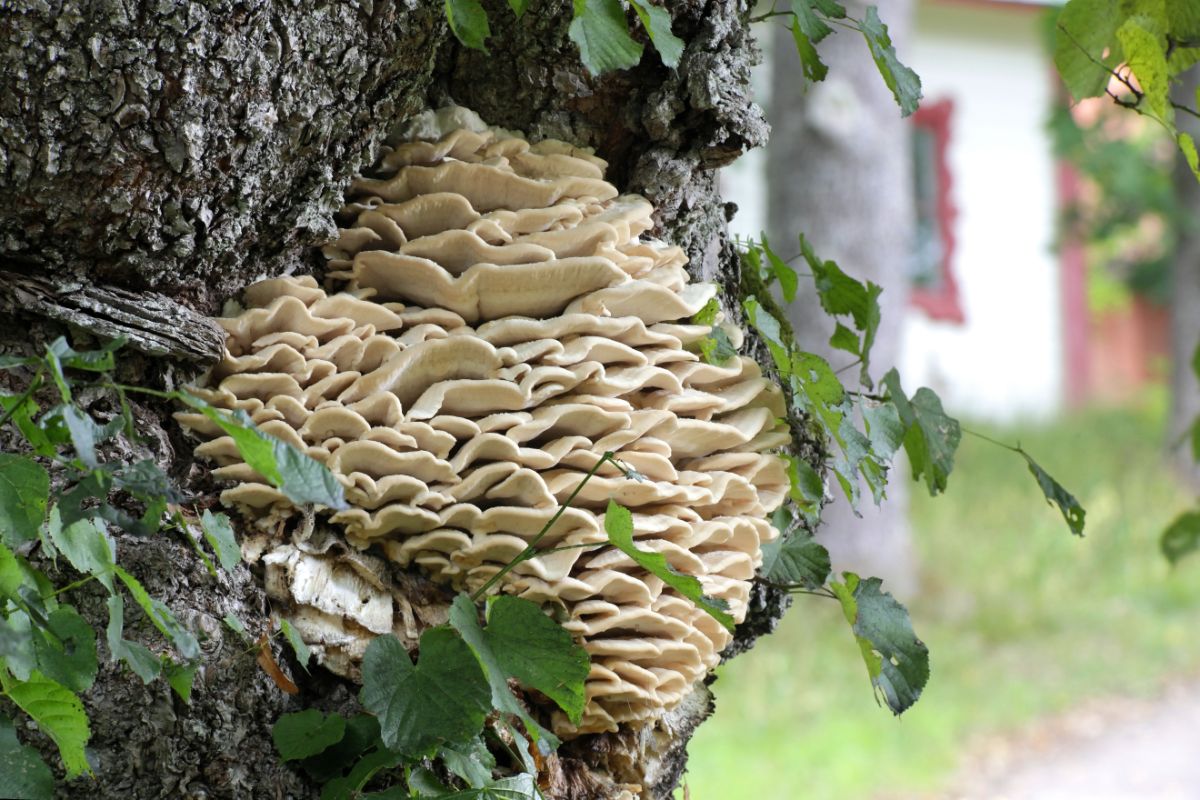
Sarcodontia crocea
This species resembles the spongy toothed polypore, but it has a dull to bright orange or yellow coloration on the cap. It also primarily grows on old fruit trees and smells strongly like pineapple or grated apples.
Sarcodontia setosa
Also similar in appearance, this species displays a more velvety surface and has a darker, brownish coloration. It grows primarily on apple trees but will also occur on other fruit trees.
Marshmallow Polypore Edibility
Although the marshmallow polypore is not poisonous, it is generally considered inedible due to its tough texture and lack of a distinct flavor. If you decide to try it, make sure to cook it thoroughly to soften the flesh.
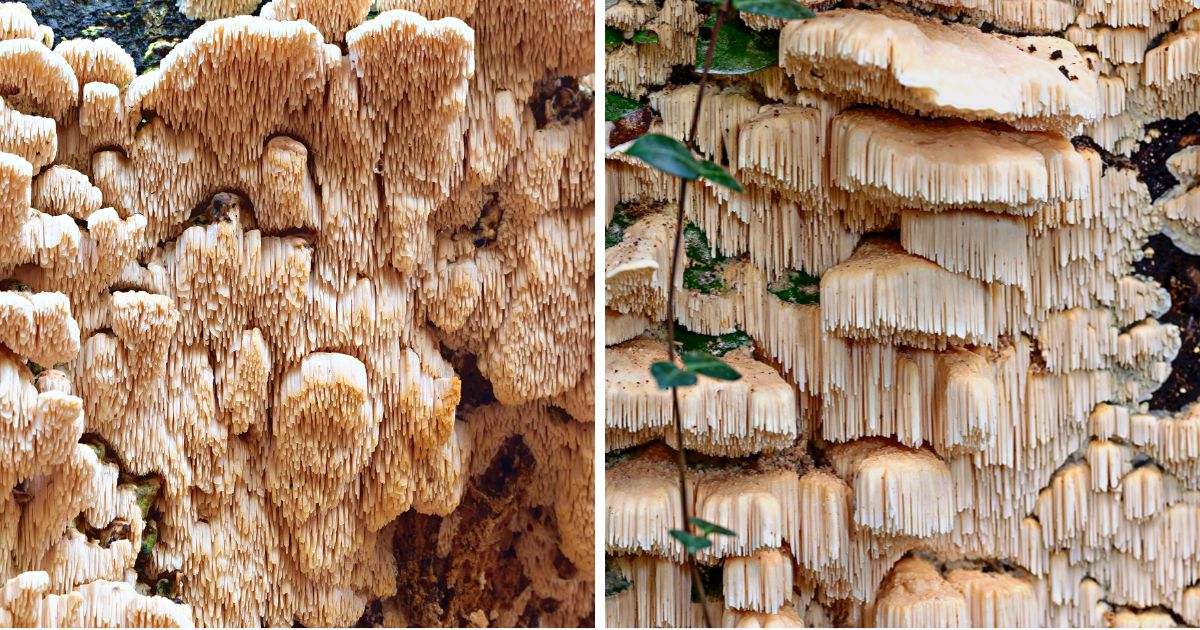
Common Questions About Marshmallow Polypore
Does the marshmallow polypore have medicinal properties?
While there is no scientific evidence to support the medicinal properties of the marshmallow polypore, some traditional practices use this species for its purported health benefits.





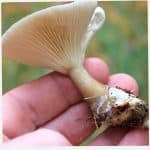



Leave a Reply